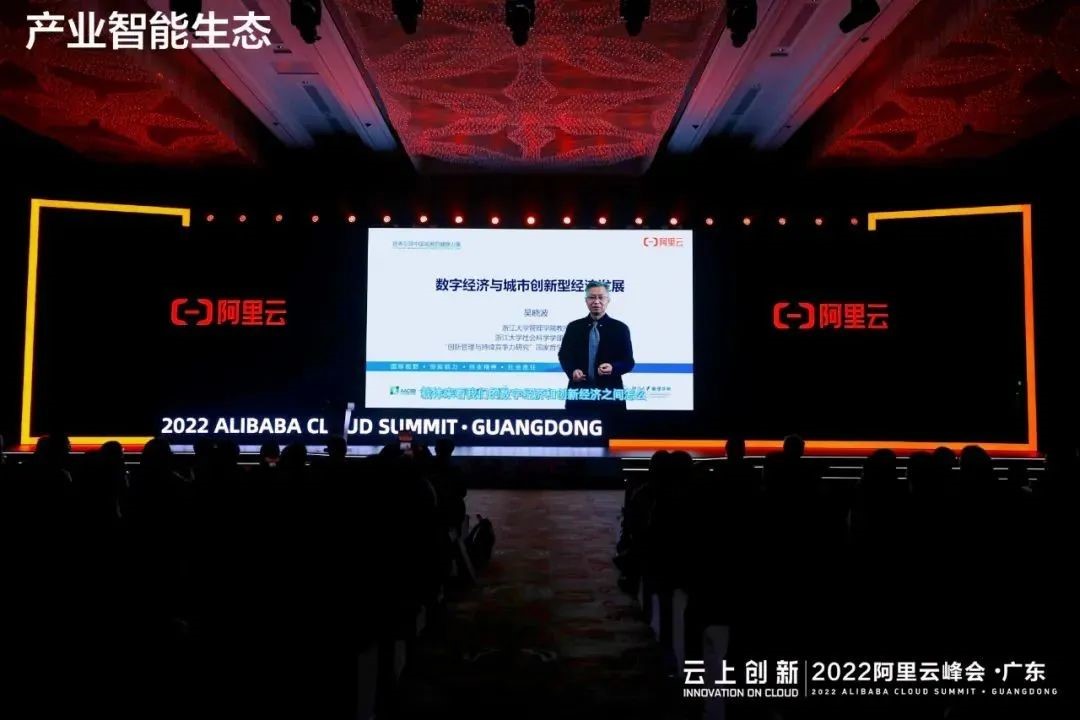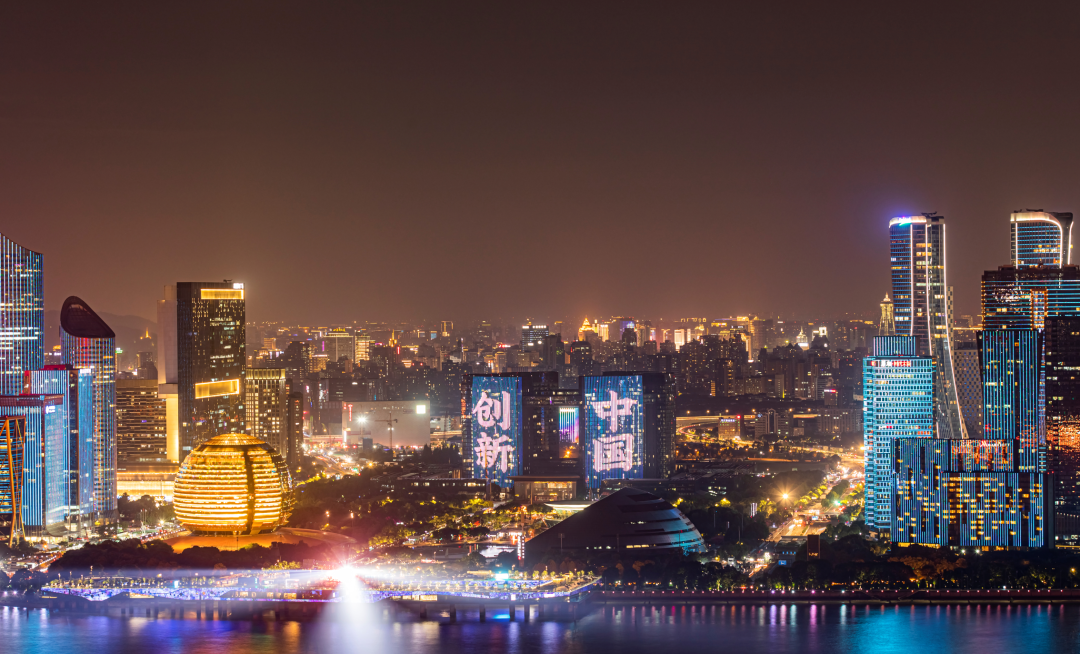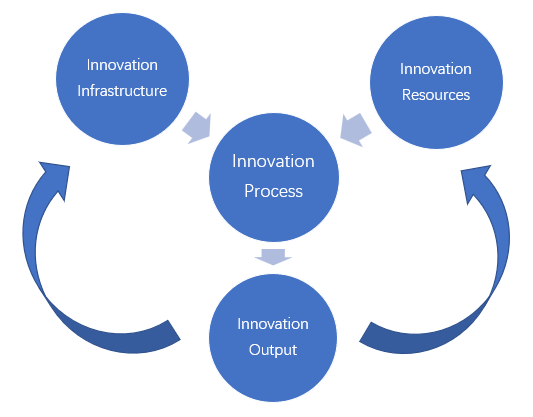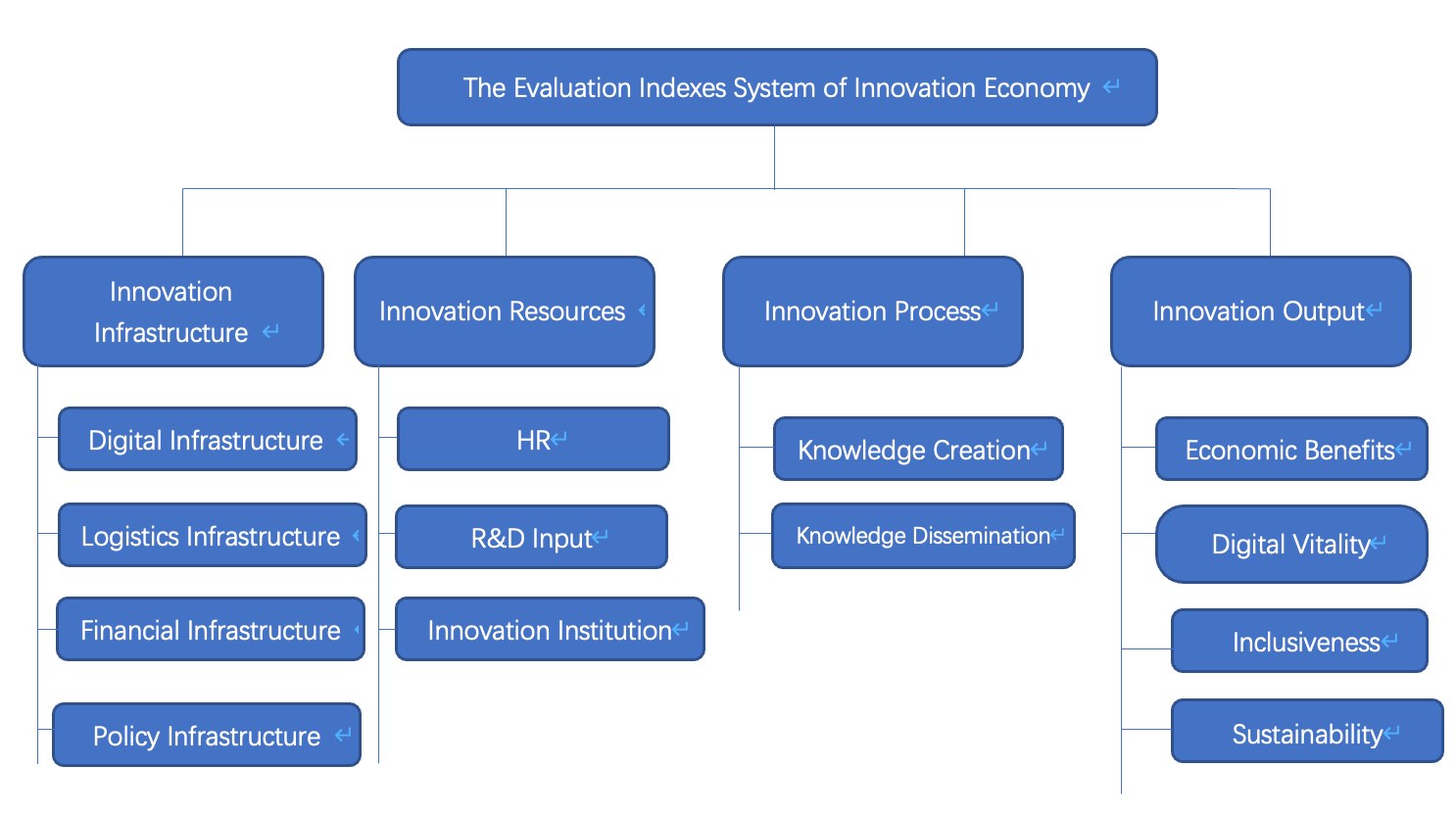On February 25, the Blue Book of China’s Urban Innovation Economy 2020-2021 (hereinafter, the “Blue Book”) was officially released at the Alibaba Cloud Guangdong Summit 2022. The Blue Book was compiled by the National Institute for Innovation Management (NIIM) and the School of Management at Zhejiang University, with data support from Alibaba Cloud.
The Blue Book included the Innovation Economy Index for 57 Chinese Cities (hereinafter, the “Innovation Economy Index”) and revealed five significant features for developing innovation economy in these cities.

Innovation Economy Index for 57 Chinese Cities


Features of innovation economy across 57 Chinese Cities
The Blue Book summarizes five significant elements of China’s urban innovation economy derived from the Innovation Economy Index and variations in regional development.
1. Urban innovation economy in China is still in the early stages of development, with evident disparities between cities.
The average innovation score across the 57 cities in the Blue Book is 28.06, with only four cities attaining scores of 40 or above, 35 cities scoring between 20 and 30, and five cities scoring fewer than 20 points. Furthermore, there is a significant gap between the scores of different cities, ranging from Beijing in first place (64.74 points) to Luoyang in last place (17.10 points).
2. Beijing, Shenzhen, Shanghai, and Guangzhou top the list followed closely by Hangzhou, Nanjing, Wuhan, and Suzhou; Dongguan is a ‘dark horse.’
The top four places on the Innovation Economy Index are occupied by the established first-tier cities of Beijing, Shenzhen, Shanghai, and Guangzhou. After Beijing, Shenzhen’s comprehensively developed innovation economy and balanced approach to infrastructure and resources ensure it ranks second, outperforming both Shanghai and Guangzhou.
Emerging first-tier cities, including Hangzhou (5th-place ranking), Nanjing (7th), Wuhan (8th), and Suzhou (9th), have entered the top 10 due to recent progress in developing their digital economies and high-quality manufacturing sectors.
Dongguan ranks in 6th place on the Innovation Economy Index, representing the only city ranked in the top 10, with an annual GDP of less than 1 trillion yuan. Accordingly, it may be considered a ‘dark horse’ on the list.

3. Four dimensions of development demonstrate significant influence on a city’s urban innovation economy.
Chinese cities display variable performance on the four critical dimensions of innovation infrastructure, resources, process, and output. Shenzhen, Guangzhou, Hangzhou, and Suzhou have achieved comprehensive development, having taken the lead across multiple dimensions while maintaining the upward trajectory of their innovation economy. Conversely, due to insufficient infrastructure and resources, cities such as Wuxi, Foshan, Changsha, and Fuzhou face a dilemma of low input and low output in developing their innovation economy.
Expediting the dissemination of knowledge and improving the efficiency of innovation transformation have become critical issues confronting all cities. Due to openness and industrial vitality, Guangdong (particularly Shenzhen and Dongguan), Hong Kong, and Macao (all part of the “Greater Bay Area”) have each performed well in terms of innovation output. In contrast, lack of inclusivity and sustainable approaches to innovation development have become significant factors in constraining innovation economy in Linyi, Tangshan, and Tianjin.
4. Distinctive features characterize innovation economy in the four major economic circles.
While the overall development of the Greater Bay Area’s innovation economy takes the lead, the Yangtze River Delta possesses a clear efficiency advantage, and the Bohai Economic Rim boasts significant strengths in conventional resources. Lastly, the Chengdu-Chongqing economic circle demonstrates considerable development potential.
The Greater Bay Area’s innovation economy shows an excellent level of development, with robust competitiveness that exceeds the other three economic circles. Furthermore, the Yangtze River Delta has a good innovation ecosystem and displays unparalleled innovation efficiency. However, despite advantages in conventional resources, the innovation economy of the Bohai Economic Rim has been undermined by relatively unbalanced and polarized development. In contrast, while the Chengdu-Chongqing economic circle was a latecomer, its cutting-edge innovation infrastructure suggests vast growth potential.
5. ‘Common prosperity,’ ‘digital economy,’ and ‘dual carbon governance’ have become new indicators of high-quality urban development, with the Yangtze River Delta and the Greater Bay Area playing an exemplary role.
Zhejiang’s leadership in coordinated development and resource sharing has ensured it has become a model for integrated urban-rural development. The digital economies of the Yangtze River Delta and the Greater Bay Area both excel because of their leading digital infrastructure and dynamic digital innovation. Xiamen has also become an exemplary city due to its innovative ecological governance.

How were conclusions in the Blue Book reached?
The Blue Book focuses on how major Chinese cities have utilized infrastructure, education, technology, and labor resources to boost their urban innovation economy, maximize quality of life, and promote sustainable development.
The Blue Book principally evaluates the development of innovation economy on four dimensions: innovation infrastructure, resources, process, and output (see Figure 1).

A conceptual framework for evaluating innovation economy (Figure 1)
The evaluation system in the Blue Book consists of four first-level indicators (innovation infrastructure, resources, process, and output), along with 13 second-level indicators, and 47 third-level indicators. The selected indicators adhere to the principles of comprehensiveness, representativeness, availability, ivity, and quantifiability, thereby facilitating a balanced scientific comparison of innovation economy between cities (see Figure 2).

The evaluation system for innovation economy (Figure 2)
The purpose of this ongoing research
The Blue Book research team initiated the ‘Innovation Economy Evaluation’ project in 2005, publishing their first monograph on the evaluation of regional innovation economy (the Blue Book of the Zhejiang Innovation Economy), which defined the concept of innovation economy for the first time in China. In 2022, 17 years later, the Blue Book of China’s Urban Innovation Economy 2020-2021 was published.
Regarding the rationale for creating this evaluation system and their ongoing research, the Blue Book team has stated as follows:
“Our goal is to help cities achieve high-quality development. The Innovation Economy Index takes the pulse of the urban innovation economy in China, revealing the patterns of economic transformation in different cities and facilitating continuous efforts to achieve high-quality, innovation-driven growth in Chinese cities.”
This is a translation of the article by DUAN Ting published on Feb. 28 on ZJU-SOM WeChat Official Account.
Editor: DUAN Ting, ZHU Yudi
Picture Source:Qianku